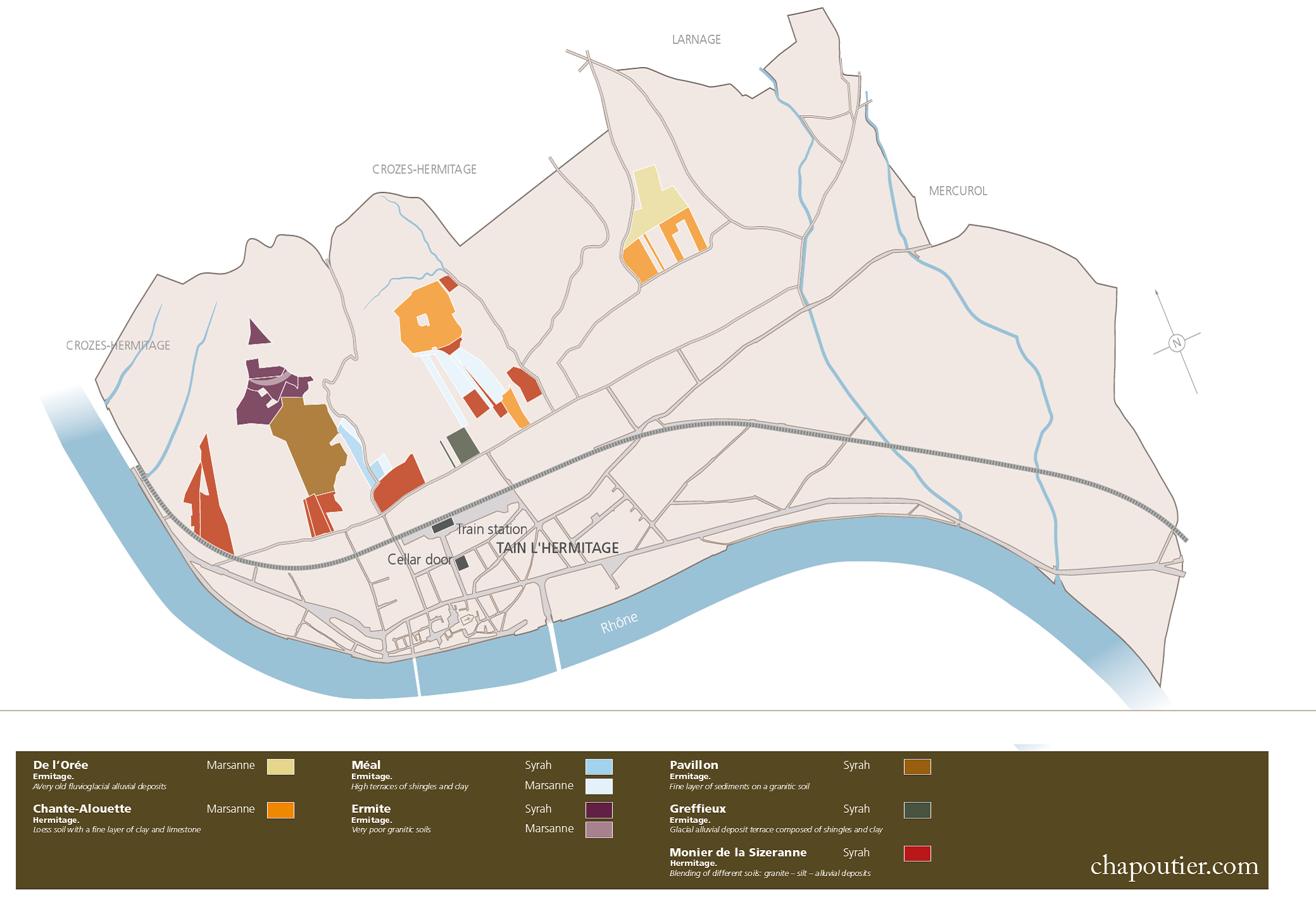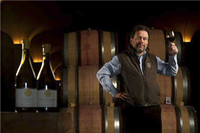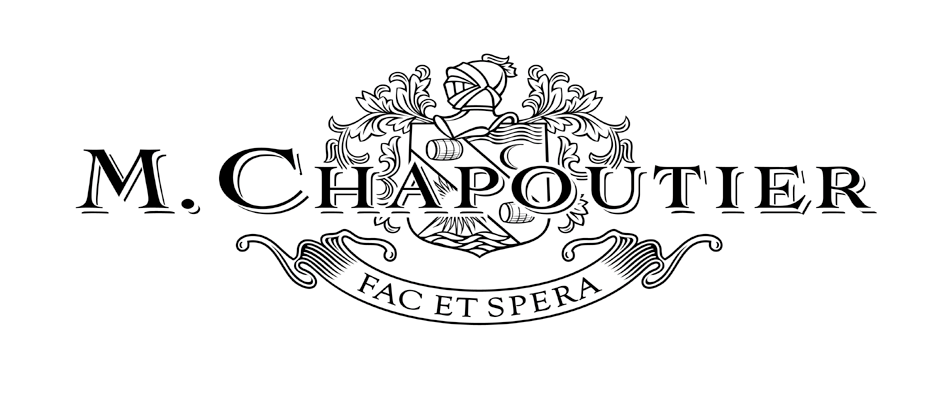Great wines, from a great wine maker.
The offer is below and please register your interest as soon as possible to secure an allocation of these highly desirable wines.
For notes please see the following pages the comments in the bold are mine (William Frazier) the full text is from M. Chapoutier.
The Rhône’s are great wines with production ranging from 100 to 700 cases and the dry Rieslings from Alsace are outstanding yet again. All produced with wild yeasts and biodynamic.

Tasting notes
This is purportedly a white vintage however I found the majority of wines to be excellent. Mr Chapoutier describes the wines as for the cellar due to their immense power and concentration. They are expensive but I believe they represent value, the vintage is not as powerful as the 11’s or 12’s and harks back to the old style of wines before our recent hot spell (2008 onwards).
Saint-Joseph Blanc ‘Les Granits’ – Good acidity and bitterness, white pepper on the finish.
2ha, 100% Marsanne
This wine comes from a small selection of very old Marsanne vines planted on steep granitic slopes in the South of Tournon. The granitic soil also contains stones and gravels. This gives a minerality to the wine, mixed with floral notes of honeysuckle and young lilies. This is a very well-balanced wine with a subtle finish of spices developing into honey with ageing.
Ermitage Blanc ‘De L’Orée’ – A real saltiness.
3.5ha, 100% Marsanne
The grapes producing “De l’Orée” come from the plot ‘Les Murets’ in the Eastern part of the hill. The soil was formed by alluvions coming from the Rhône and Isère Rivers during the Ice Age. It is composed of rolled pebbles and sand. The old vines (70 years old) guarantee low yields of high quality grapes. It is an amazing wine with a great potential for ageing. Many aromas characterise this wine: White fruit, honeysuckle, quince, spices and hazelnut. It is very long in the mouth, with a fresh final note.
Ermitage Blanc ‘Le Méal’ – A pungent concentration and power, from the warmest place in Ermitage
2ha, 100% Marsanne
Grapes producing “Le Méal” come from the Méal hillside. This is an old fluvioglacial alluvial deposit soil with large pebbles which contribute to the soil warming. The vines (more than 50 years old) produce very low yields and guarantee high quality. On the palate, this wine is ample and round, with a fine exotic freshness and hints of roasted almonds.
Ermitage Blanc ‘L’Ermite’ – Simply stunning. Brilliant. Great poise and tension which is the springboard the immense complex length.
0.5ha, 100% Marsanne
This wine is made from a selection of Chapoutier’s oldest Marsanne (some more than 100 years old) situated at the top of the Hermitage hill, behind the chapel, at a place named the Ermite and planted on poor granitic and shallow soils (gore). This is the most structured M. Chapoutier white Hermitage. Yields are very low. It shows an elegant balance, huge complexity and intense minerality typical of concentrated Marsanne.
Châteauneuf-du-Pape ‘Croix de Bois’ – Very expressive. Great Grenache. Beautiful mouth feel and a lovely finish.
5ha, 100% Grenache
This distinctive terroir is located in the town of Bédarrides, and is characterised by large rolled quartzite pebbles and sandy red clay. This forces the roots to grow deep in the soil. The pebbles protect the topsoil from the drying mistral wind, the sun, and compacting. The Croix de Bois terroir is nevertheless quite distinct from Barbe Rac. At about half the age of Barbe Rac vines, and at a higher altitude, its spicy nose and deep red-fruit flavours make a distinctive statement of dense Grenache intensity. The wines from this land have strong structure and colour. It offers multiple aromas: Very ripe red fruit, plum and a few spicy scents with full-flavoured, warm tannins. This is a wine with great ageing potential, which perfectly embodies the character of Châteauneuf-du-Pape.
Châteauneuf-du-Pape ‘Barbe Rac’ – Excellent.
4ha, 100% Grenache
This vineyard is littered with the famous ‘galets’ or pudding stones characteristic of the area, but in reality the subsoil if far more important – the quaternary terrace has a complex and varied mixture of red clay and ferruginous sand. The vines are very old (approximately 90 years old). This unique hilltop vineyard West of the village of Châteauneuf-du-Pape makes some of the silkiest and most elegant wines in the region. The biodynamic viticulture ensures low yields (15-20 hl/ha) which are necessary to create a pure and intense Grenache wine. The wine is ample, fleshy, hot and round. It has an outstanding density with an impressive length.
Crozes-Ermitage Rouge ‘Les Varonniers’ – Great. Crisp fresh acidity, rounded with a beautill ripens to the fruit.
3.2ha, 100% Syrah
Les Varonniers wine comes from the oldest Crozes-Hermitage vines (more than 60 years old). The granitic slopes have a South-East exposure at the end of the Hermitage hill and on fluvial terraces (former bed of the Rhône River) on the “Chassis” plot. The soil is more similar to the one on the Hermitage hill than the flat terroir of the surrounding Crozes. Varonniers’ name comes from the plot, known as ‘Varogne’ historically and officially recognised as a ‘lieu-dit’. The wine follows the same vinification and maturation as its cousins in Hermitage.
Saint-Joseph Rouge ‘Les Granits’ – ‘Lick the Stone’ says M.C.. Soft, round, rich, good spice and finish and yes the mouth feel is like licking a cool slate.
2.5ha, 100% Syrah
This is a selection of Chapoutier’ s oldest Syrah vines planted in the birthplace of the Saint-Joseph appellation. Here the very poor, stony granitic soil (suggested by the name) restrains the excessive vigour. This wine is characterised by smoky and peppered aromas. It has tight tannins with a long persistency in the mouth.
Saint-Joseph Rouge ‘Le Clos’ – Great aging potential.
Less than 1ha, 100% Syrah
With lovely notes of dark fruit, graphite note and a beautiful minerality on the nose, this Syrah wine is soft, rich and elegant on entry. Very fine, with silky tannins, the long-lingering finish is very aromatic and reminiscent of the granite terroir.
Côte-Rôtie ‘La Mordorée’ – – My favourite of the wines. Kaboom. Fresh crunchy acidy wonderful fruit. Huge.
3ha, 100% Syrah
This is a very steep, terraced vineyard located on the border of the “Côte Blonde”. The soil is composed of chlorite and ferruginous mica-schists in loess depressions and earth veins. This is made from 100% Syrah (no blend with viognier). The 70 years old vines produce tiny yields. This is an ample, elegant, very well-structured wine. The aromas develop into earthy and smoky notes typical of a great Côte-Rôtie.

The Ermitages are similar to those of the 1983 vintage.
Ermitage Rouge ‘Les Greffieux’ – A soft beautiful wine.
3.5ha, 100% Syrah
This vineyard is situated at the foot of the Hermitage Hill. It is a glacial alluvial deposit terrace with shingles and clay. Vines are over 50 years old. Les Greffieux wine has powerful but silky tannins, rich blackberry fruit and liquorice notes.
Ermitage Rouge ‘Le Méal’ – Blackberries, power and tannin.
2.2ha, 100% Syrah
This wine is produced with grapes coming from Le Méal hillside (150-200 metres altitude). It takes its name from the old French word meaning “the best”. This slope is composed of high terraces of shingles and clay. Vines are over 50 years old. The wine is characterised by a supple character, a fine balance and intense fruit aromas. Yields are again exceptionally low, at around 20 hl/ha. Le Méal produces wines with great perfume, richness and amazing ageing potential. The nose exhibits a ripe fruit character, with rich, stewed blackberries and powerful but velvety tannins on the palate.
Ermitage Rouge ‘Le Pavillon’ – Super tight so hard to taste but what a long expressive finnish.
4ha, 100% Syrah
This wine comes from ‘lieu-dit’ Les Bessards. The plot has a specific geology: It is composed of a fine layer of sediment lying on granitic subsoil. The 65 years old vines are located at an altitude of approximately 130 metres on the Hermitage hill, above the ruins of a stone house giving its name to the wine. With tiny yields (20 hl/ha), this is perhaps the most complex of the various Ermitage wines. Le Pavillon is characterised by great length on the palate, liquorice and tobacco aromas. It has a very long finish.
Ermitage Rouge ‘L’Ermite’ – Great fresh acidity, dry tannin and great lengh. All the ingredients are there.
3ha, 100% Syrah
The plot is situated at the top of the Hermitage Hill, around the chapel. The elevated position of the vineyard, over 200 metres, allows long ripening at the end of the growing season. The soil of loess provides excellent drainage for rainwater. Vines are over 80 years old and are planted on poor granitic soils. L’Ermite traditionally produces the most elegant and aromatic Ermitage. It has powerful tannins, smoky notes and black pepper.
Alsace
We tasted the barrel samples of the 2013 Riesling which in April 2014 had not all completed their fermentation and so where hard to taste. These are wines for the cellar and if you are looking for something to keep for a few decades than again these represent some of the best value in wine.
Alsace Relisling Lieu-dit Buelh
Alsace Relisling Lieu-dit Fels
Alsace Relisling Lieu-dit Berg
From M. Chapoutier
The Vintage
Everything, or almost everything that can be said has probably already been said about the 2013 vintage. After the uninspiring weather in spring, 2013 had been criticized and written off early by practically everyone. Having rightly or wrongly been proclaiming the “vintage of the century” year after year, in 2013 we are going to see a return to a style which we thought climate warming had made a thing of the past. As with any “challenging” year, the understanding of the vintage’s particular characteristics and the subsequent decisions taken by the wine producers will have amplifying effects. The gestating wines will tell all in due course but, as we come out the harvest, an objective insight was needed into the genesis of this vintage which we expect to give some pleasant surprises, in both white and red wines.
Northern Rhone
The first plots in the Northern Rhône Valley were picked over the week commencing 23 rd September, in Saint-Péray. The Saint Joseph whites were picked and the first early white Hermitages were sorted over the same week. The mild temperatures and frequent south wind over the last ten days of September accelerated the end of the red grapes’ ripening process. The bulk of the harvesting took place in the first week of October, starting with the early ripening Cornas vineyards and all of the Côte-Rôtie, followed by the Crozes-Hermitage and Saint-Joseph. The excellent health of the red Hermitages meant that we could afford to leave them to continue ripening until the week commencing 7th October.
THE SOUTHERN RHÔNE: Great Chateauneufs, crisp and racy...
The consequences of the late harvest which characterizes 2013, were felt outside the Northern Rhône Valley. This peculiarity hit all European vineyards, from Alsace to Portugal, with varying effects, but notably resulting in an austere and northern character, providing a now rare but accurate reading of these different terroirs.
The grape harvest got underway on 23rd September, the Syrah was picked first, but the Grenache needed 15 days longer to reach anticipated physiological ripeness. As the post fermentation macerations draw to an end, the wine shows generous fruitiness with some vigour, certainly very different from the classic generous Châteauneuf style but with an uncomplicated expression and a fruity Pinot-type character, typical of the Grenache in a late vintage.
Exceptional wines, born from plots of old vines, chosen with the greatest care in each appellation.
The Chapoutier family motto “Fac & Spera” – do and hope – sums up the humility and daring it takes to make these rare wines. They are the emblem of M. Chapoutier’s philosophy. While no formal hierarchical cru system exists in the Rhône, one has been in place (among producers), for several generations. Vineyard names, or lieux-dits (named places) have been established over time, some officially and some through traditional usage. As the great growers have paid more attention to the unique character of their individual vineyard sites, they have been able to elevate a series of unique wines of place.
Maison M. CHAPOUTIER has been at the forefront of this movement with its Sélections Parcellaires. Rare wines that have become the highest expression of each appellation. Michel has elevated these parcels to an unofficial “grand cru” range.
The winegrower lets the soil express itself, without intervention, to offer the best snapshot of the terroir. Here biodynamic farming is meaningful.
With only 100 to 700 cases produced annually, these rare wines grown on ancient vines with tiny yields are among the greatest red and white wines produced in the world.
Vinification Maturing
All the wines are unfiltered and unfined and use natural clarification.
Syrah
Vinification: The harvest, which is 100% destemmed, is matured in small concrete vats or in open wooden vats. Maceration lasts from 4 to 6 weeks. The temperature does not exceed 32°C to enable good quality extraction. Two daily treadings ensure a good extraction of the tannins.
Maturing: Free run juice is transferred immediately into 50% new and 50% one-year-old casks to be matured from 14 to 18 months.
Marsanne
Vinification: After pressing, the must is cold-racked for 24 hours. Fermentation in 50% new casks, the rest in vats at a temperature between 20 and 22 °C.
Maturing: Before bottling, the maturing in casks is checked by frequent tastings. Maturation on lees with regular stirring for 8 to 12 months.
Grenache
Vinification: In vats made of concrete covered with epoxy resin as Grenache is sensitive to oxidation. The grapes are 100% destemmed; fermentation lasts about 3 weeks at a temperature which varies from 30 to 33°C.
Maturing: Ageing in vats for 14 to 16 months.

Order Form
| 2013 SELECTIONS PARCELLAIRES | Under Bond | Order |
| Rhone | ||
| Saint-Joseph Blanc ‘Les Granits’ 6 x 75cl | £ 131 | |
| Ermitage Blanc ‘De L’Orée’ 6 x 75cl | £ 353 | |
| Ermitage Blanc ‘Le Méal’ 6 x 75cl | £ 353 | |
| Ermitage Blanc ‘L’Ermite’ 6 x 75cl | £ 1,047 | |
| Châteauneuf-du-Pape Rouge ‘Croix de Bois’ 6 x 75cl | £ 180 | |
| Châteauneuf-du-Pape Rouge ‘Barbe Rac’ 6 x 75cl | £ 194 | |
| Crozes-Ermitage Rouge ‘Les Varonniers’ 6 x 75cl | £ 111 | |
| Saint-Joseph Rouge ‘Les Granits’ 6 x 75cl | £ 118 | |
| Saint-Joseph Rouge ‘Le Clos’ 6 x 75cl | £ 214 | |
| Côte-Rôtie ‘La Mordorée’ 6 x 75cl | £ 284 | |
| Ermitage Rouge ‘Les Greffieux’ 6 x 75cl | £ 284 | |
| Ermitage Rouge ‘Le Méal’ 6 x 75cl | £ 389 | |
| Ermitage Rouge ‘Le Pavillon’ 6 x 75cl | £ 630 | |
| Ermitage Rouge ‘L’Ermite’ 6 x 75cl | £ 700 | |
| Alsace | ||
| Riesling Alsace Lieu-dit-Berg 6 x 75cl | £ 90 | |
| Riesling Alsace Lieu-dit-Buelh 6 x 75cl | £ 93 | |
| Riesling Alsace Lieu-dit-Fels 6 x 75cl | £ 97 |
Magnums and larger sizes are available to order for a small premium. Please enquire.
Terms and Conditions of Sale
1. All wines are available in limited quantities. We may well have to allocate stocks. These allocations are non-negotiable.
2. All prices are quoted IN BOND DELIVERED, although you may buy the wines Duty Paid. If you request your wines to be delivered Duty Paid, Duty and VAT will be invoiced separately upon delivery at the prevailing rates.

